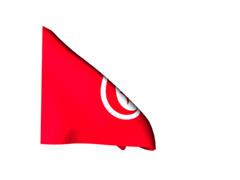
[Arabic][Egyptian Arabic][Gulf Arabic][Iraqi Arabic][Juba Arabic][Lebanese Arabic][Maroccan Arabic][Palestinian Arabic][Tunisian Arabic][Zanzibar Arabic][Dari][Pashto][Persian][Urdu][Uyghur]
Tunisian Arabic, or simply Tunisian, is a set of dialects of Maghrebi Arabic spoken in Tunisia. It is known among its over 11 million speakers as: تونسي, romanized: Tounsi [ˈtuːnsi] (listen), "Tunisian" or Derja "everyday language" to distinguish it from Modern Standard Arabic, the official language of Tunisia. Tunisian Arabic is mostly similar to eastern Algerian Arabic and western Libyan Arabic. As part of a dialect continuum, Tunisian merges into Algerian Arabic and Libyan Arabic at the borders of the country. Tunisian Arabic's morphology, syntax, pronunciation, and vocabulary are considerably different from Modern Standard Arabic or Classical Arabic. Like other Maghrebi dialects, it has a vocabulary that is mostly Arabic with a significant Berber, Latin and possibly Neo-Punic substratum. However, Tunisian has also many loanwords from French, Turkish, Italian and the languages of Spain. Tunisian Arabic is mostly intelligible to speakers of other Maghrebi dialects but is hard to understand or is unintelligible for speakers of Middle Eastern Arabic. Multilingualism within Tunisia and in the Tunisian diaspora makes it common for Tunisians to code-switch, mixing Tunisian with French, English, Standard Arabic or other languages in daily speech. Within some circles, Tunisian Arabic has thereby integrated new French and English words, notably in technical fields, or has replaced old French and Italian loans with standard Arabic words. Furthermore, Tunisian Arabic is closely related to Maltese, which is a separate language that descended from Tunisian and Siculo-Arabic. Maltese and Tunisian Arabic have about 30 to 40 per cent spoken mutual intelligibility. Moreover, code-switching between Tunisian Arabic and modern standard Arabic is mainly done by more educated and upper-class people and has not negatively affected the use of more recent French and English loanwords in Tunisian.